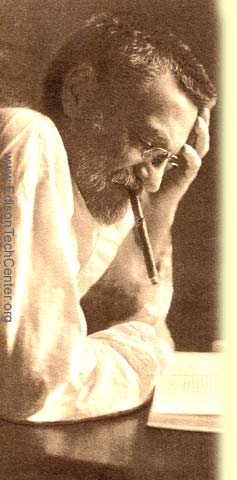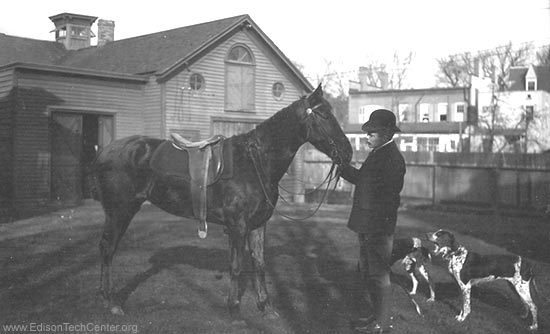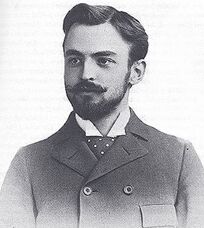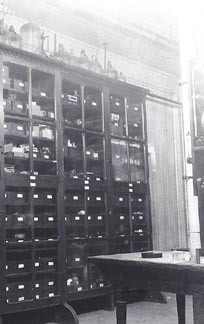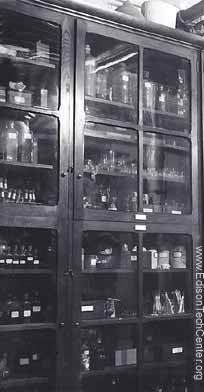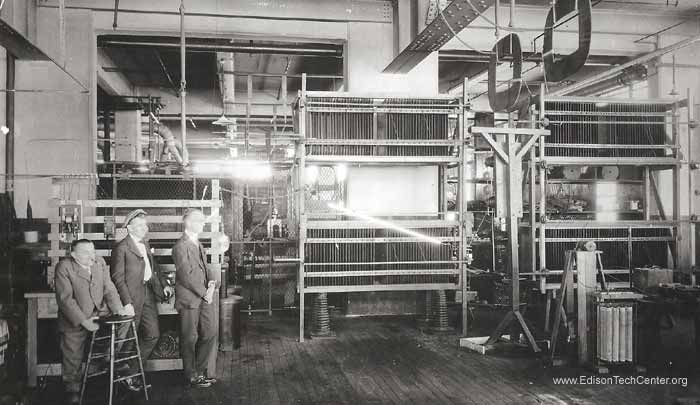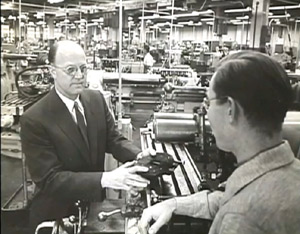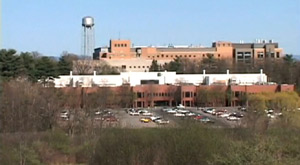
General Electric Research Lab
A hot spot for innovation on the planet for the last 111 years
The General Electric Research Lab stands as a testament to the power of gathering engineers together with a common purpose. The lab was the first industrial research lab of its kind. Prior to the formation of the GE Research Lab the only industrial research labs were German pharmaceutical labs. In the German labs like Bayer scientists and researchers worked independently and competed with one another. At General Electric in Schenectady, New York engineers and scientists were encouraged to share information and assist with problem solving. They were given great financial support to buy materials. The best machinists and craftsmen were employed to help build prototypes. From the tungsten light bulb to the computerized hybrid car it is no wonder that the Schenectady lab produced a great proportion of our world's technology.
|
Above: AC power pioneer C.P. Steinmetz contemplates a problem. 1890's
|
|
|
|
|
A typical laboratory room at the downtown research lab. In this photo you see an experiment to create artificial lighting. The lighting was used to test the strength of insulators which would be forced to take real lighting strikes in the field.
A sample of some of the early successes:
-Ezekiel Weintraub and Hewitt discover that mercury vapor causes the conversion of alternating current to direct current. The "Mercury Arc Rectifier" is thus used for many purposes including the powering of DC electric trains, battery chargers, and more.
-Ernst F.W. Alexanderson works on a single phase railway motor while Charles G. Curtis develops the most powerful and efficient steam turbine to date with the help of William LeRoy Emmet. The Curtis Turbine would revolutionize power generation world wide. The first commercial sale of the turbine was to the Chicago Edison Company and it produced 5000 kilowatts of power in 1903. Later turbines would be able to produce increasing quantities of power with increasing efficiency.
-Willis Whitney develops the GEM carbon filament lamp. This improves light output efficacy by 25%.
-In 1908 Coolidge had discovered how to make ductile tungsten. Tungsten was the perfect material for the incandescent light bulb, this fact was known, but it was Coolidge's work that discovered how to make tungsten bendable and easily manufacturable. This would greatly improve the life and durability of the light bulb and secure General Electric's position as #1 in incandescent light bulb manufacturing for the next 100 years. His tungsten was also used in the ignition of cars as a replacement for costly silver or platinum.
-William Coolidge greatly improves resolution of the X-ray by using his new tungsten targets in 1912. Irving Langmuir further develops early forms of the vacuum tube in the same year.
-Ernst Alexanderson's work on radio and television broadcast solidified him as the "Father of Radio and Television" and lead to the formation of RCA and the big three networks. Alexanderson did not work directly in the lab, but his labs were close to the others and all the engineers in radio/wireless were able to work together on problems.
-Albert Hull's work created new vacuum tubes as well as the magnetron (microwave).
The Legal Support:
We could go on and on with the explosion in developments attained at the lab. The point is that for the first time great minds were assembled and given the needed resources to do their work. The collaboration of minds and funding allowed the researchers to "play" in the world of creativity. It is important not to forget the contributions of the patent department. General Electric kept the best records of any other company at the time in order to be able to prove dates and times that inventions were created. The large numbers of patent attorneys sorted out facts and proved/disproved claims by outside inventors. Some conflicts for patents did arise. It is important to examine all angles of the argument when trying to find out who invented something first. It is possible that in some cases General Electric may have won legal battles with its legal muscle. In these cases of conflict some outside inventors may have lost claims to being the first simply because of inadequate legal protection, however the great majority of inventions and developments were truly developed first at the GE Research Lab.
The Success of the Lab:
The success of the lab can directly be attributed to the great collection of minds who for the most part worked out of a passion for their work. In the environment of the early GE Research Lab there was a great feeling of teamwork. Working for fortune or fame was not this lab's environment. While some engineers like Thomas Edison and Nikola Tesla endlessly craved fame and attention, the team in Schenectady worked relatively quietly. Some like Steinmetz were even said to have created innovations on other team members' projects and refused to take credit. C.W. Hewitt quietly helped C.W. Rice and Edward Kellogg develop the world's first powerful dynamic loudspeaker yet Hewitt was never mentioned until years later. The noncompetitive environment of the lab and the undirected research continued until the 1950's when C. Guy Suits and others changed the structure of the lab. Many pioneers worked at the lab. Some worked for a lifetime like Ernst Alexanderson while others conducted short term projects like David Packard (of HP).
 The facility in Niskayuna in the late 1950's |
C.Guy Suits - Director of the Lab, ushering in a new era of technology in the 2nd half of the 20th century |
In 1955 the lab moved to Niskayuna, just a few miles north of Schenectady. Now high-paid researchers could live in the growing wealthy suburbs and commute easily to work, while the new property allowed for increased security and plenty of space for expansion. In the Cold War environment it was important to restrict access to the lab using the large amount of acres of natural fields with fences to separate the lab from nearby roads. The new location gave direct access to the Mohawk River for increased water use as well as underwater experiments. During this time major advances took place including Bob Hall's semiconductor laser and the man made diamond. Director Guy Suits divided the lab into Metallurgy & Ceramics, Electron Physics, Chemistry, and General Physics. The lab continued to develop smaller vacuum tubes. So much was spent on miniaturizing the vacuum tube that the company did not wish to enter the semiconductor research being done elsewhere. Learn more about this period from the documentary "Wizards of Schenectady: C. Guy Suits"
See the Video Below to learn more about the expansion of the lab:
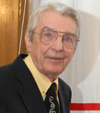 |
|
|
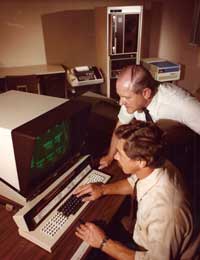 |
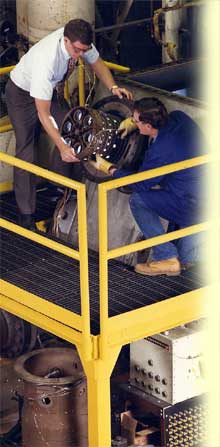 |
|
A Better Future
General Electric will depend upon further breakthroughs to carry the company into the future. The 2000's were an unstable time period, but if one looks at the past there were other periods of great risk which were changed by innovation. In 2011 President Obama visited the GE Global Research Facility at Niskayuna to check on there positive progress in the field of "green energy". The lab has recently stated that it has made a breakthrough in battery technology. If GE management does a good job navigating the risky market of high tech and the engineers continue to create great new solutions the General Electric Research Lab will go on making another century of progress.
Past lab directors include:
Willis Whitney
William D. Coolidge
Chauncy Guy Suits
Arthur M. Bueche - Name Change to Coporate Research and Development (GE CR&D)
Roland Schmitt
Walter Robb
Lonnie Edelheidt
Scott Donnely
Mark Little (current) - Name Change to Global Research-Article by Michael Whelan with assistance from Bill Kornrumpf and John Harnden Jr.
Sources:
"Men and Volts" by John Hammond 1941
"The General Electric Story" - Hall of History Publications 1989
Interview with George Wise, by the Edison Tech Center 2010
Wizards of Schenectady, The Rice Legacy by the Edison Tech Center 2010
Wikipedia: William D. Coolidge, Willis Whitney
Various Interviews with GE employees from the
Techsplorer Series by the Edison Tech Center 2007-2009
Photos:
Edison Tech Center ArchivesPhoto/Video use:
Commercial entities must pay for use of photos/graphics/videos in their web pages/videos/publications
No one commercial or public is allow to alter Edison Tech Center photos/graphics/videos.
Educational Use: Students and teachers may use photos and videos for school. Graphics and photos must retain the Edison Tech Center watermark or captions and remain unmanipulated except for sizing.Permissions - Videos: We do not email, FTP, or send videos/graphics to anyone except in DVD form. Payment is needed for this service. See our donate page for pricing, and our catalogue for a listing of videos on DVD.
Professional video production companies may get videos in data form with signed license agreements and payment at commercial rates.More about the people of the GE Research Lab
Copyright 2011 Edison Tech Center
copyright 2010 Edison Tech Center

